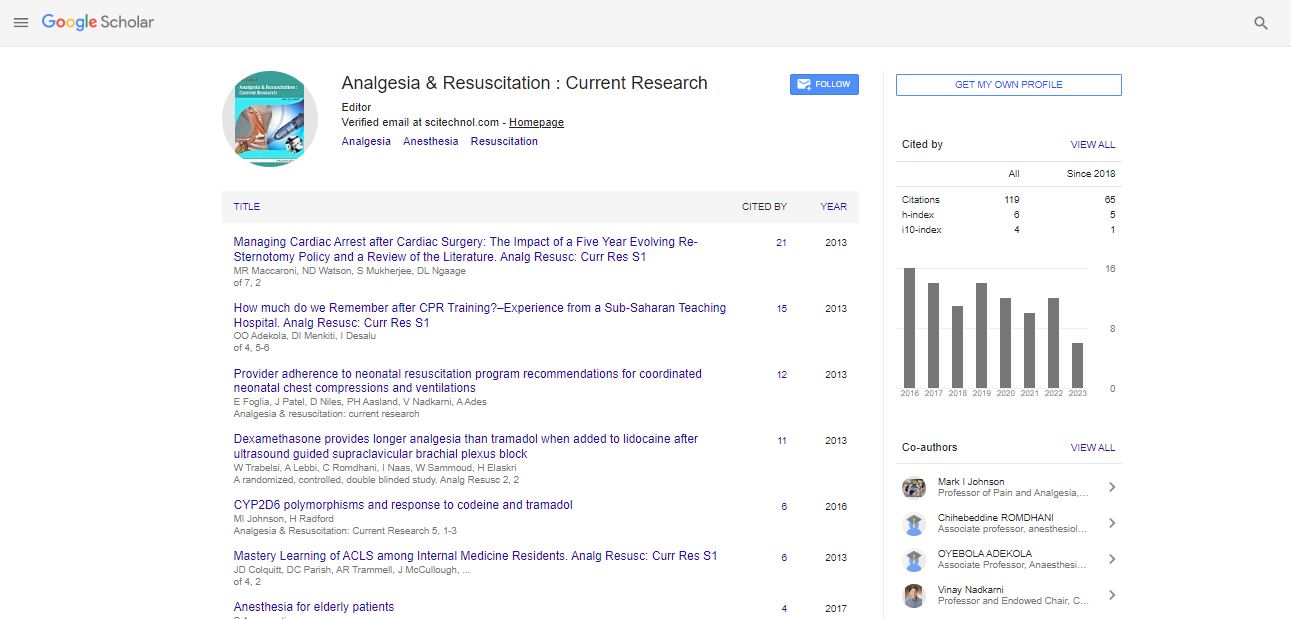Research Article, Analg Resusc Curr Res S Vol: 2 Issue: 0
Effects of the ResQPod� on Maximum Concentration and Time to Maximum Concentration of Epinephrine in a Porcine Cardiac Arrest Model
| Don Johnson1*, Jackie Rushton1, Maxwell Hernandez1, Jessica Stone1, Jason Brzuchalski1, Libby Beck1, LTC Joseph O’Sullivan1 and LTC Michael Loughren2 | |
| 1US Army Graduate Program in Anesthesia, Fort Sam Houston, San Antonio, Texas, USA | |
| 2Madigan Medical Center, Seattle, Washington, USA | |
| Corresponding author : Don Johnson US Army Graduate Program in Anesthesia, Fort Sam Houston, 2619 Winding View, San Antonio, Texas 78260, USA Tel: 210-714-4341 E-mail: arthurjohnso@gmail.com |
|
| Received: May 08, 2013 Accepted: May 24, 2013 Published: May 30, 2013 | |
| Citation: Johnson D, Rushton J, Hernandez M, Stone J, Brzuchalski J, et al. (2013) Effects of the ResQPod® on Maximum Concentration and Time to Maximum Concentration of Epinephrine in a Porcine Cardiac Arrest Model. Analg Resusc: Curr Res S1. doi:10.4172/2324-903X.S1-002 |
Abstract
Effects of the ResQPod® on Maximum Concentration and Time to Maximum Concentration of Epinephrine in a Porcine Cardiac Arrest Model
Cardiac arrest remains one of the leading causes of mortality with more than 900 occurrences daily in the United States alone claiming an estimated 325,000 lives each year, 1,000 people a day or one person every two minutes. The ResQPod®, an impedance threshold device (ITD), was developed to augment cardiac output during cardiopulmonary resuscitation (CPR). The American Heart Association (AHA) Guidelines 2005 for CPR and Emergency Cardiac Care gave the ResQPod® a Class IIa recommendation. The Class IIa recommendation means the intervention has very good evidence to support its use. Conversely, the 2010 AHA Guidelines state that it was not possible to determine the relative contribution of an ITD to the improved outcome. The use of an ITD may be considered by trained personnel as a CPR adjunct in adult cardiac arrest

